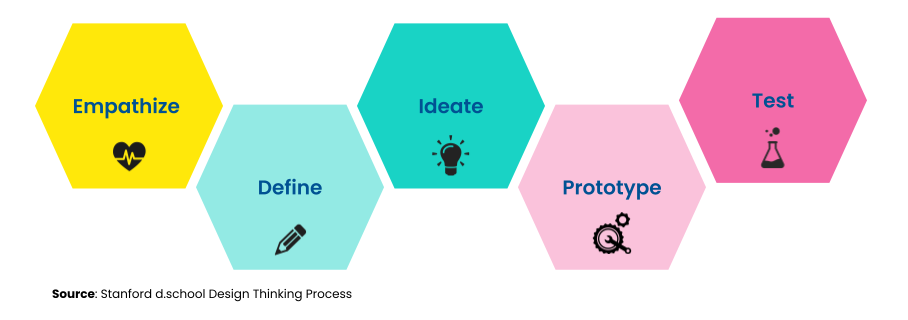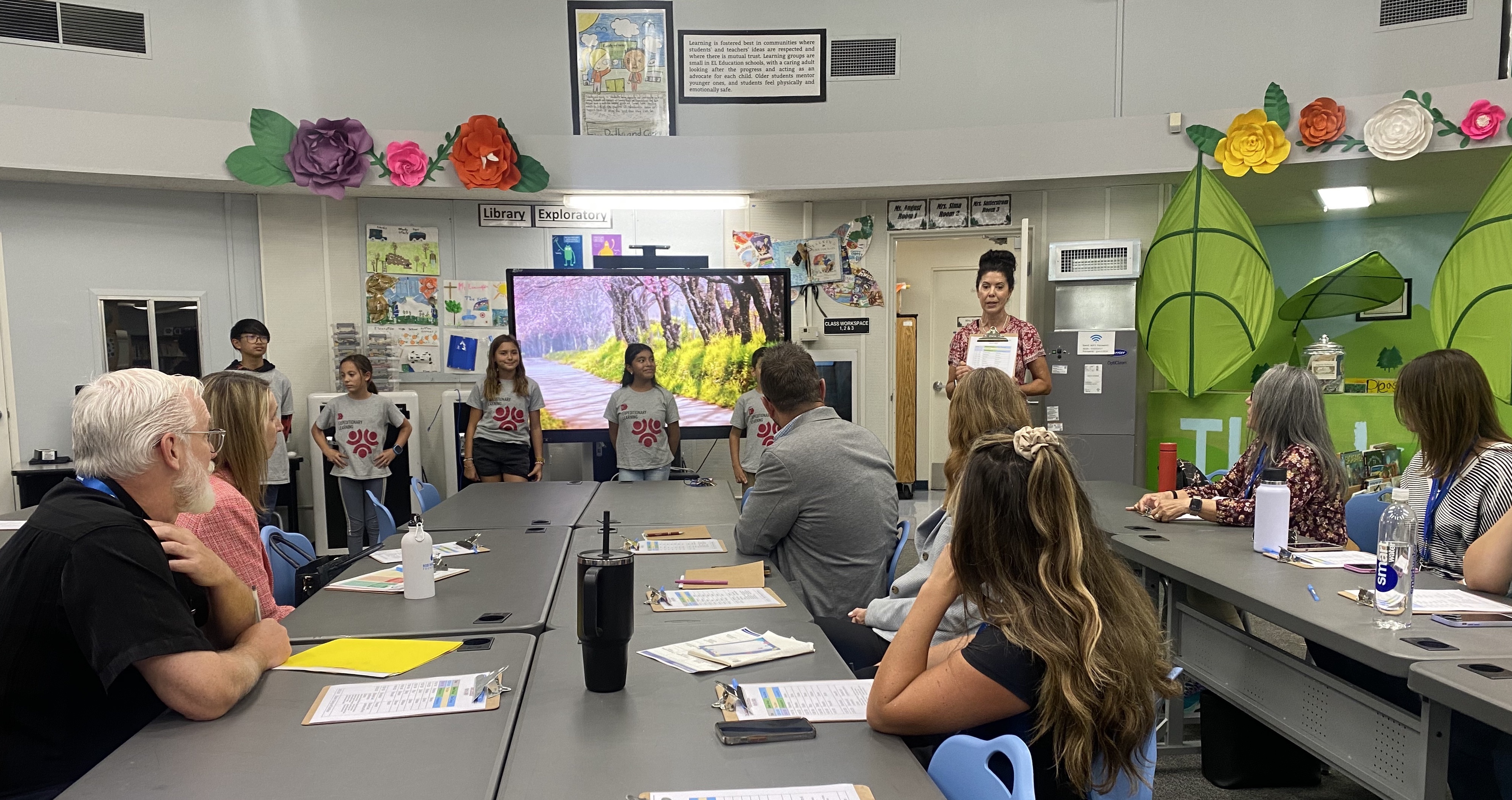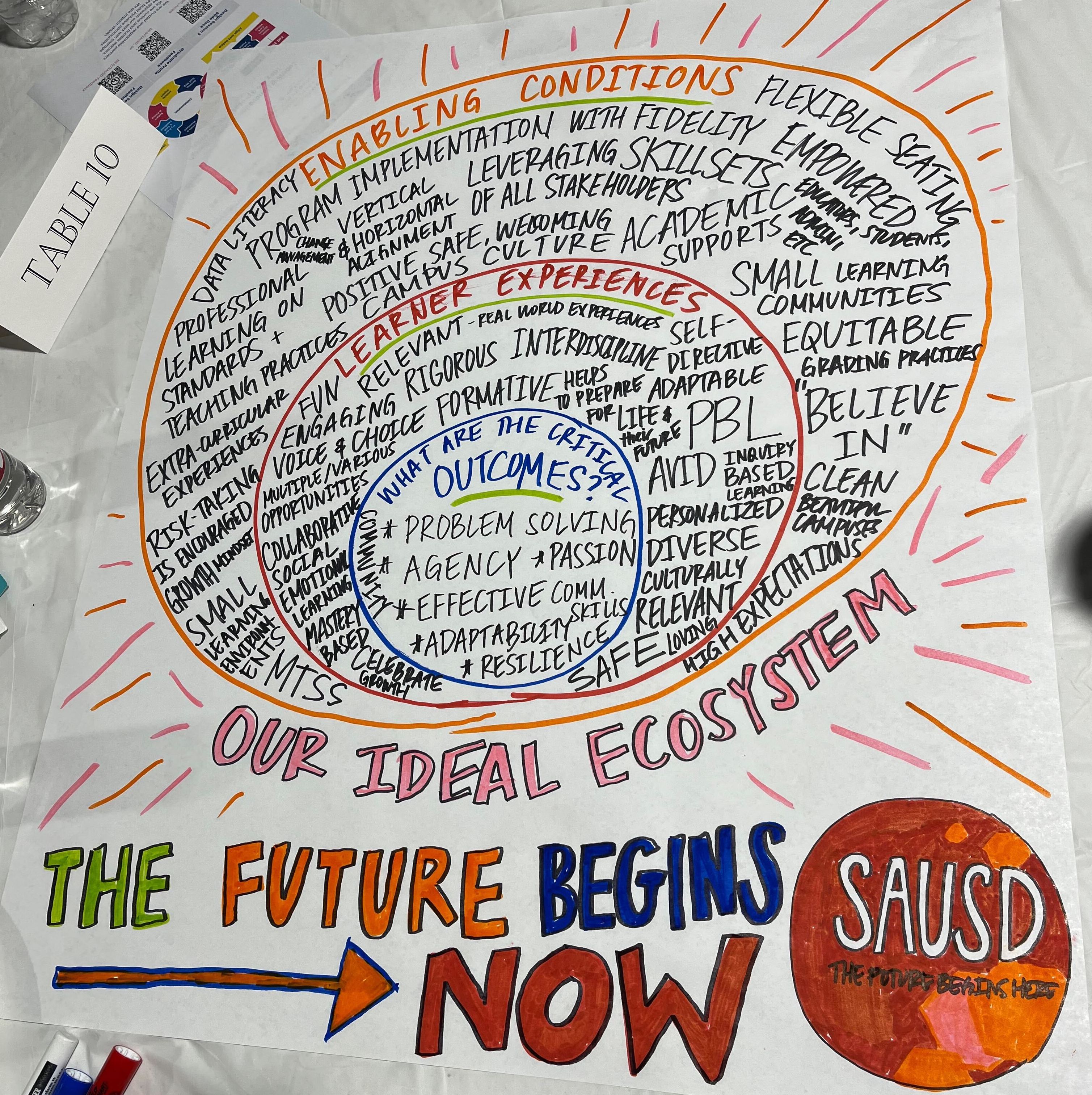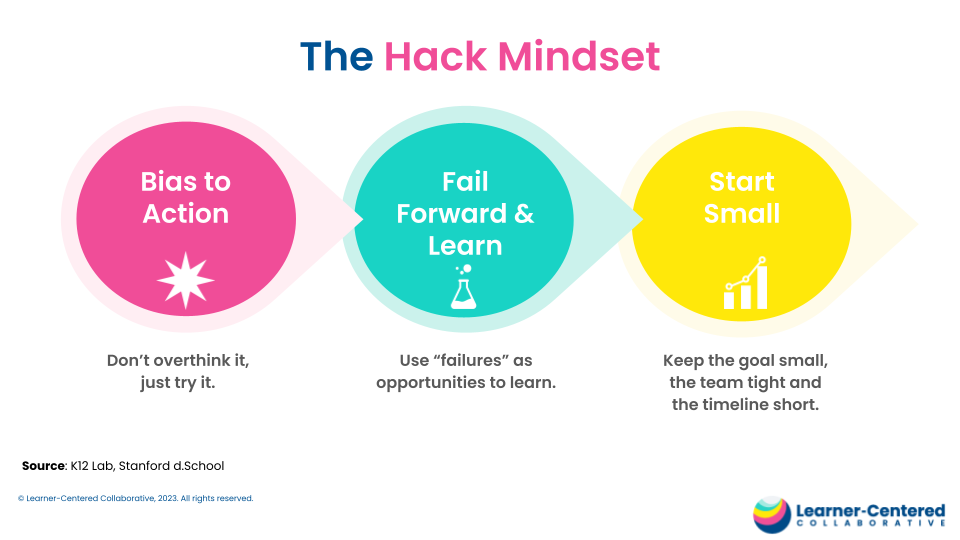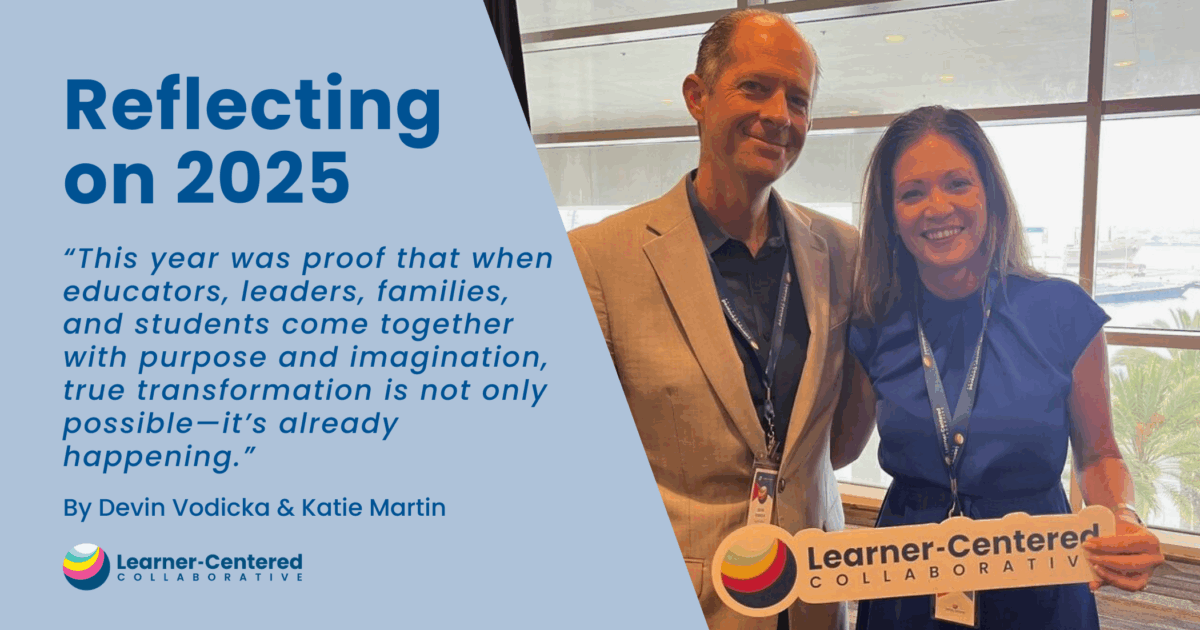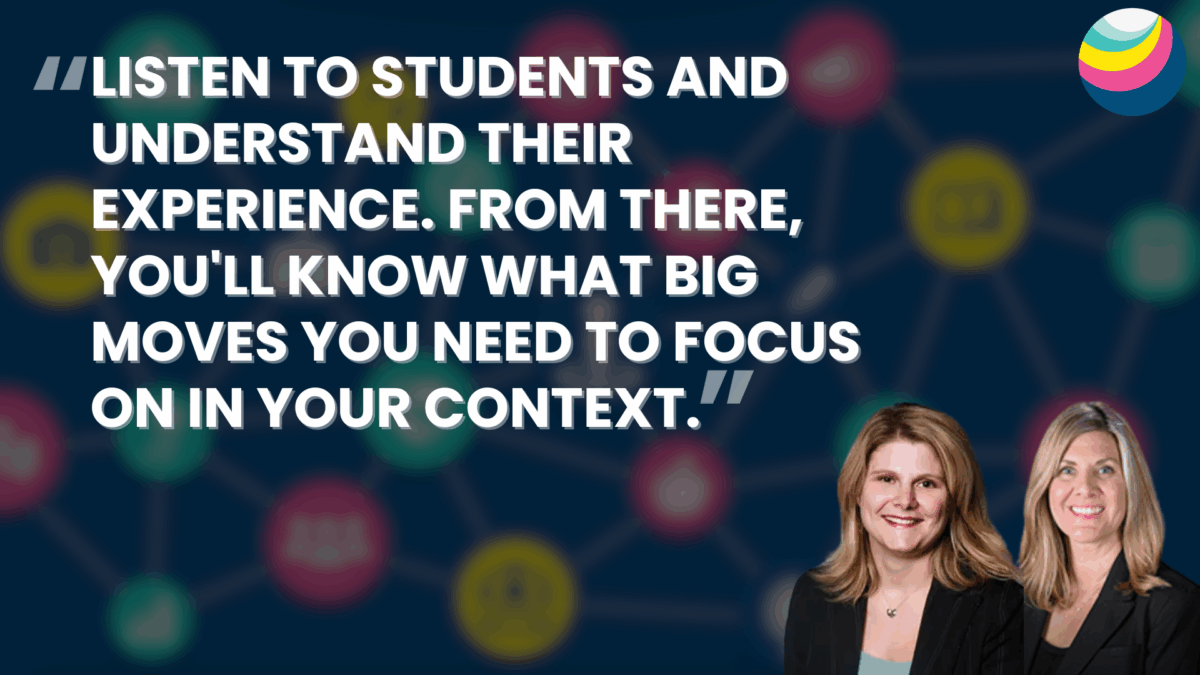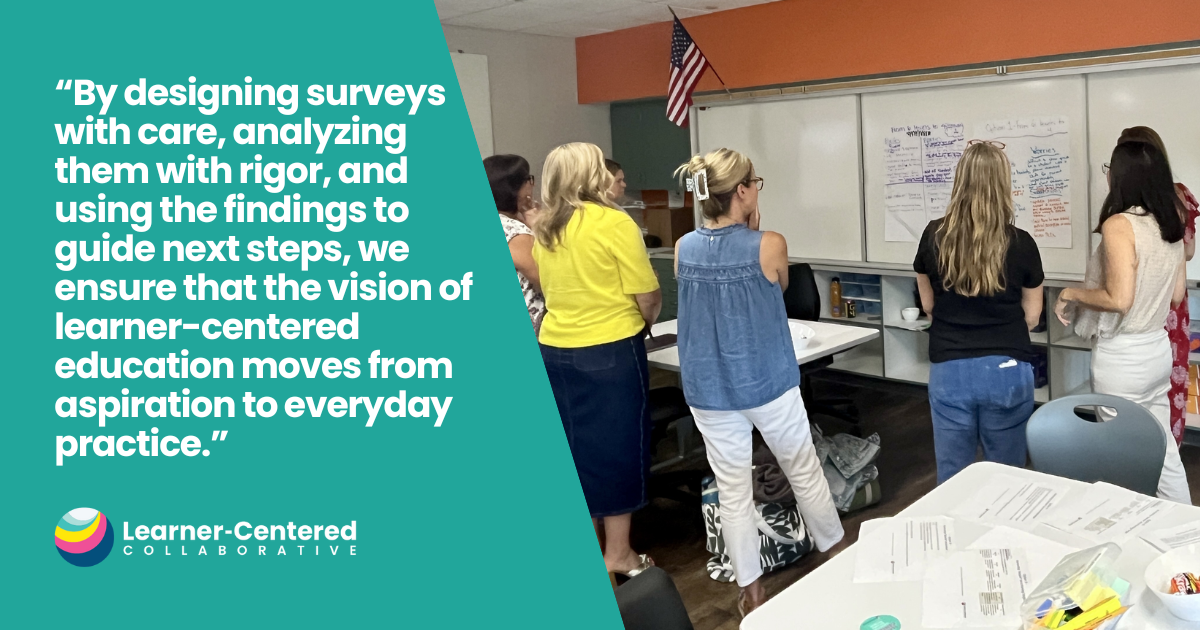What It Means to Center Learners By Design
What does learner-centered education have to do with design? A lot, actually.
At the core, both design and learner-centered education are human-centered. Contrary to what one might think, they don’t require a blank canvas or a sleek modern building, but rather a story, assets to build upon, challenges to address, and a deep understanding about ourselves, each other, and our needs and aspirations.
Similarly, design and learner-centered education are not free-for-alls, but rather an intentional focus on what matters most for those at the center of impact.
When it comes to design and learner-centered education the ultimate test is: does it work? Designer Frank Chimero aptly points out,
“People ignore design that ignores people.”
This rings just as true in education. A strategic plan that sits on a shelf collecting dust is unrealized potential. Turn it into a co-designed Framework for the Future and it becomes the backbone of a thriving learning community that serves as an active guide shaping learning, priorities, and resources in an education ecosystem. Along the same lines, we know learners thrive when they see themselves, their interests, and their strengths in their learning experiences, and we also know engagement plummets if these markers of relevance and meaning are missing.
Design is inextricably linked to learner-centered education, and centering learners by design guides all we do at Learner-Centered Collaborative—from school and district partnerships, to self-paced courses and resources, to convening networks of leaders and changemakers and connecting the dots within the learner-centered movement.
A Design-Thinking Approach to Education
The design process is especially powerful in education, and really any scale change, progress, or innovation that directly impacts people. It bridges future aspirations with existing strengths in systems, schools, classrooms, leaders, teachers, and students. Through research, practice, and an orientation to being curious and humble learners our team at Learner-Centered Collaborative has developed, prototyped, and refined how we support partners and the education community to center learners by design. While this looks different in each context, there are foundational design principles to centering learners by design.
Start with Empathy
Entering a partnership or a new learning experience starts with curiosity and humility. Whether we’re kicking off work with a new district partner or designing a course for an educator or leader to pursue on their own timeline, learning and growth must start with understanding existing processes, systems, strengths, and aspirations. From here we can leverage what exists and begin to imagine and design the adjacent possible.
What might starting with empathy look like?
Listening to Learners. Perhaps the most important component of a learner-centered approach is elevating student voice and making it an integral part of any and all work. This can be done in many ways depending on time, setting, age, capacity, and more. Bottom line is that truly listening to and hearing the student perspective is indispensable to a human- and learner-centered design approach. These key constituents can be part of the process through student forums, 1:1 or small group interviews, focus groups, surveys, shadowing students and giving student representatives a seat at the table.
4 Strategies for Listening to Students to Spark Change is filled with how-to information for listening to learners and examples from partner schools and districts.
Learning Walks. These non-evaluative classroom observations provide an opportunity to view practices and bright spots in classroom environments, celebrate strengths, and identify trends to inform future support—all without judgment.
Use our Learning Walk “Look Fors” tool to guide a non-evaluative Learning Walk with your team.
Self–paced Courses. Both the development of our courses and the design of each course keeps context front and center. The mere existence of these courses is in part a result of empathy interviews and surveys that revealed a need for flexible learning experiences that offered highly regarded components of our in-person professional learning experiences—such as personalized, goal-driven, relevant learning. From here, in designing each course we have embedded an empathy-based approach. For example, prompts throughout our courses support participants to reflect on current practices, set goals, and identify strengths and opportunities.
When we start with empathy, it becomes clear that the canvas is far from blank and our design purpose comes into focus.
Define the Opportunity
With a clear view of what’s working, where support is needed, and where a community aspires to be, we can begin to define the opportunities for iteration. In this step a guiding coalition may put a loose stake in the ground as a starting place to gather input and feedback from all stakeholder groups. This often looks like a first pass at defining the outcomes and the principles that will help achieve the outcome.
What might defining the opportunity look like?
Whole learner outcomes. Following a backward design model, many partnerships and Frameworks for the Future start with defining the desired whole-learner outcomes (often articulated in a Learner Portrait) and working backward to define the learning model and success indicators (often captured in a scorecard) that will achieve those outcomes.
Self-reflection and personalized goal-setting. Educators working through a self-paced course will also experience this design phase, it just looks a bit different. In the course selection process, we offer educators a diagnostic survey that offers guidance toward the courses that will be the most relevant and meaningful to their identified personal goals and growth areas. Within each course, educators have the opportunity to define their own learning path including when they work on courses, how long they take on each module, and how they share what they learned, all based on their needs and goals.
While the outcome or deliverable of this step may very much appear as a draft, it can be the most challenging step to produce as it is a first attempt at synthesizing and channeling all that has been learned and gathered.
Ideate, Prototype, and Test In Practice
Whether the artifact that emerges from the prior phase is a draft Framework for the Future or a sticky note of personalized goals, as human-centric designers who know our work is only valuable if our designs actually function and work in practice it is our duty to put them out there in a world to gather feedback and learn so we can iterate and improve.
What might an ideate-prototype-test cycle look like?
Gather community feedback. Just as we must create space for community input at the start, we must also create space for feedback along the way. Whatever the artifact is that has been developed, giving educators, parents, constituents, and learners an opportunity to share feedback is a driver of future success and adoption. Many districts do this through community, staff, and PTA/O meetings, student forums, and other touch points with local communities.
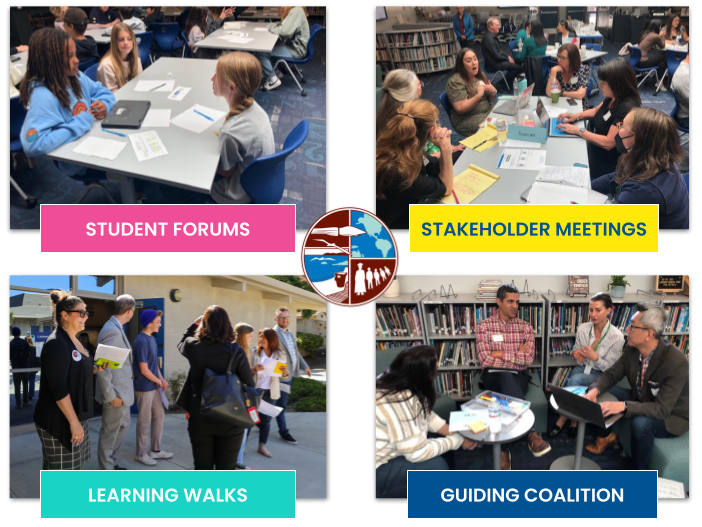
Testing new practices with learners. For educators who may have added to their repertoire after taking a course, trying things with a designer mindset is a great way to iterate. A designer mindset often comes with a deeper sense of permission to be creative and releases the perspective that you need to have all the answers. By putting new learning into practice we can quickly identify what works and what still needs work in a quick and effective way.
Tap into a community of practice. A supportive group of colleagues can be a great way to share ideas or problems of practice and get feedback from trusted practitioners. These can be informal or formalized groups within a school or district. At Learner-Centered Collaborative we lead these with school and district partners and among Connections cohorts. While participating in courses, educators can engage with an online community and virtual community of practice sessions that provide opportunities for getting feedback and support from other educators.
This Start, Stop, Continue protocol is a useful tool when soliciting concrete, actionable feedback from stakeholders.
Learner-Centered Education, Design, and Agency
The throughline of design in learner-centered education continues indefinitely. A tenet of learner-centered education is the power to act, to have agency over one’s learning and experiences– essentially to design your personal, authentic, goal-driven learning journey. In a learner-centered paradigm, “We often say learning is a process, not an event” which aligns to the Stanford d school’s Hack Mindset which biases toward action, failing forward, and starting small.
At the end of the day, design solves problems and creates solutions. Ensuring all learners know who they are, thrive in community, and actively engage in the world as their best selves is a tall order and an urgent question of our time that calls for all of us to actively design solutions. So, to all the educators in our learner-centered community, add designer to your title and let’s get started.

